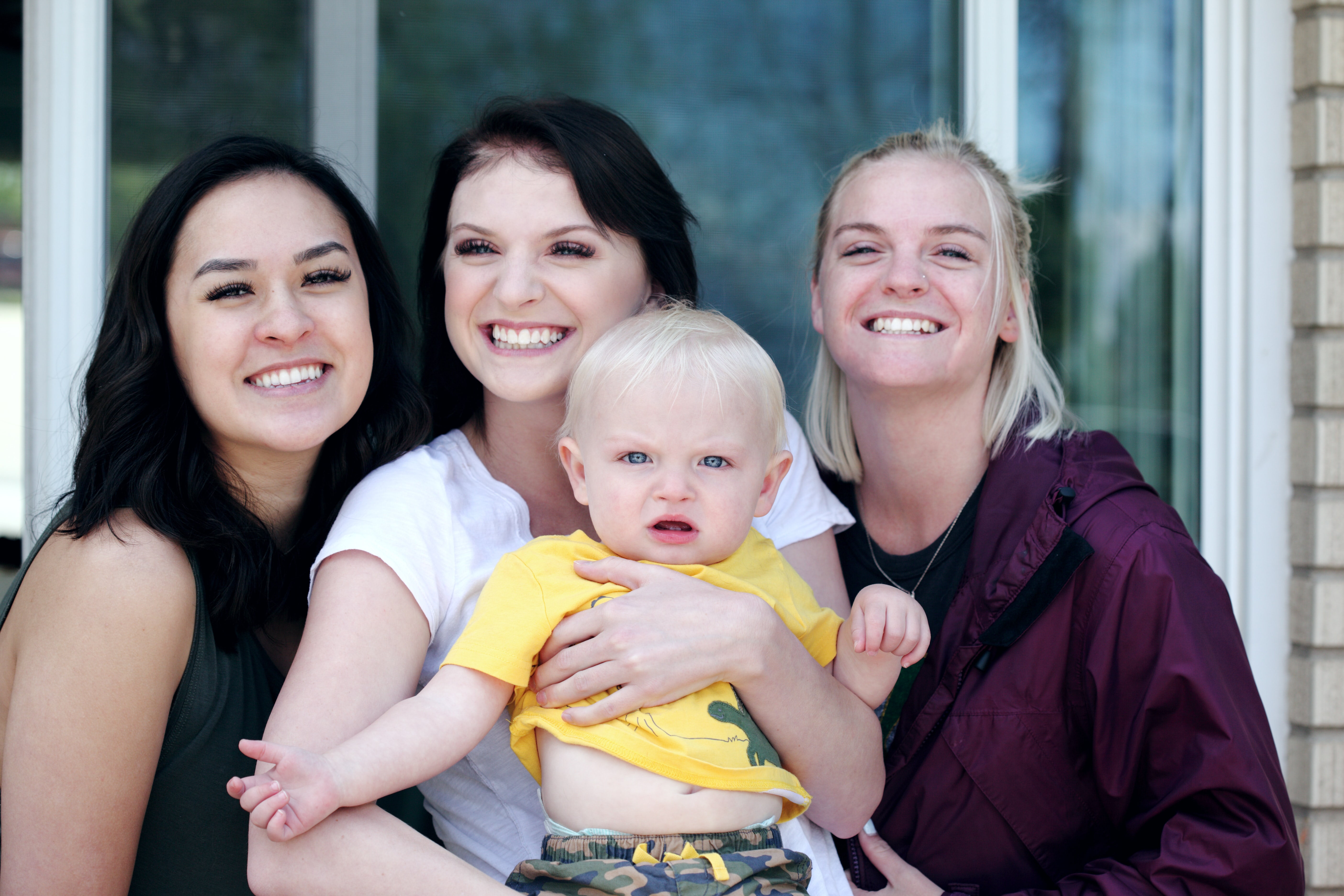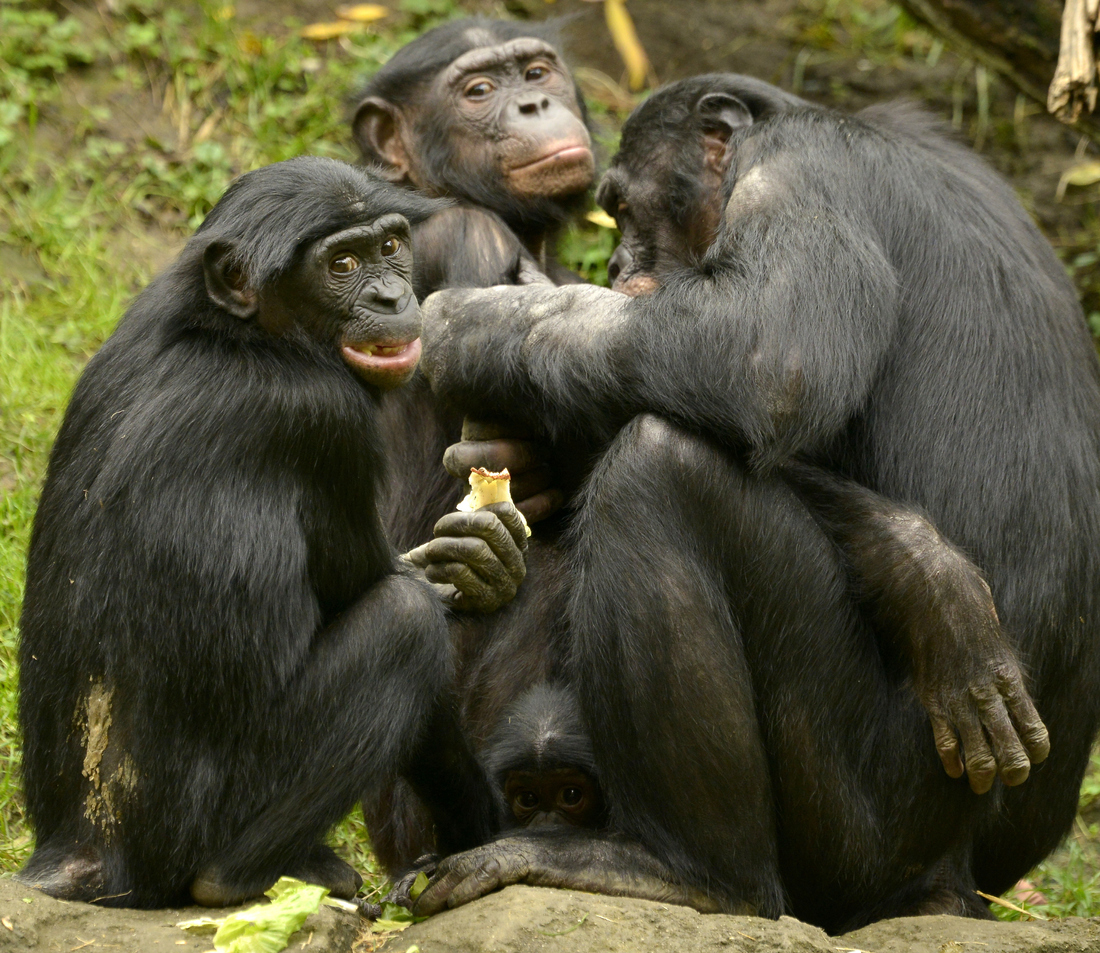
It Takes A Village – Alloparenting and Female Sexual Fluidity
Being born with the ability to go both ways may have been beneficial to ancestral women ~ Barry Kuhle
Same-sex sexual behavior poses an evolutionary puzzle. Reproduction is the engine of evolution. Given the primacy of reproduction, why would sexual selection motivate women to engage in sexual behaviors with other women?
Alloparenting – A Proposed Cause of Female Sexual Fluidity
The theory of alloparenting is a proposed ultimate cause of female sexual fluidity. It suggests that sexual fluidity increased ancestral women’s ability to form pair bonds with female alloparents who helped rear children to reproductive age. Under this view, most heterosexual women are born with the capacity to form romantic bonds with both sexes.
The alloparenting hypothesis (and this post) is based on the research and writing of evolutionary psychologist Barry Kuhle at the University of Scranton.
Sexual Fluidity Defined
As noted in my last post, Ultimate and Proximate Causes of Female Sexual Fluidity – the Wisdom of Evolutionary Psychology, Lisa Diamond defines sexual fluidity as “situation-dependent flexibility in women’s sexual responsiveness that makes it possible for some women to experience desires for either men or women under certain circumstances, regardless of their overall sexual orientation.” Sexual fluidity is described as a conditional adaptation designed to promote opposite-sex sexual behavior in certain situations and same-sex sexual behavior in other situations.
Precursor to Proximate Causes – Men and Women Are Not the Same
In upcoming posts, Mating Straight Talk will address proximate causes (situations and immediate factors in the environment) of female same-sex behavior. For now, let’s set the foundation of how or why female sexual fluidity was a mechanism for evolution that may have been the precursor to all proximate causes.
The nature of female sexual fluidity and occurrence of female alloparenting underscores this highest level take-away: men and women are not the same (in aggregate) in their mating strategies and sexual responsiveness. The sooner we really get that, the sooner a kind of healing between men and women can begin.
Ultimate Causation
What is meant by an ultimate cause? Ultimate causes of human behavior come from our ancestral past and address behavior or psychological processes that were adaptive for survival-based natural selection or reproduction-based sexual selection.
Ancestral Women Faced Problems of Paternal Investment
Ancestral women recurrently faced the adaptive problems of securing resources and care for their offspring. They were frequently confronted with either a shortage of paternal resources due to their mates’ death, an absence of paternal investment due to rape, or divestment of paternal resources due to their mates’ extra-pair mating efforts. Fluid sexuality would have helped ancestral women secure resources and care for their offspring by promoting the acquisition of allomothering investment from unrelated women. Same-sex sexual responsiveness was triggered when inadequate paternal investment occurred or when women with alloparenting capabilities were encountered. Perhaps this is true in modern times; the salient point (of this hypothesis) is that alloparenting and same-sex female sexuality was linked for thousands of years.
What the Alloparenting Hypothesis is Not
Kuhle is emphatic about what the alloparenting hypothesis is not:
- The alloparenting hypothesis is not intended to explain the evolutionary significance of a homosexual sexual orientation. Instead, it aims to account for same-sex sexual behavior among heterosexually-identified (What I called “mostly straight” or “hetero-flexible” women in Sexual Orientation, Gender Identity, Presentation, and Biological Sex.)
- The hypothesis is not intended to explain all occurrences of same-sex sexual behavior in women. The broad scope of same-sex behavior by women and the practices of self-identified lesbians do not necessarily rely on alloparenting as the primary cause.
- The hypothesis does not claim that all same-sex sexual behavior serves to promote alloparenting. Alloparenting is not the inevitable result of female same-sex behavior.
- The hypothesis does not imply that same-sex sexual behavior is the only route to alloparenting. Rather, the theory suggests that alloparenting is one sexual selection adaptation that encouraged sexually fluid mating by facilitating and sustaining bonds between mothers and allomothers.
- The hypothesis does not equate fluid sexuality with a chosen sexuality (as explained by Lisa Diamond in Sexual Fluidity, 2008; to be discussed in-depth in my next post). Although Kuhle postulates the existence of mating mechanisms that promote flexibility in women’s sexual responsiveness, no conscious choice is invoked or implied.
Alloparenting in Monkeys
Alloparenting is particularly common in our primate cousins. Among squirrel monkeys, relatives and non-kin engage in alloparenting and allonursing of infants to free up time for the genetic mother to forage, find potential mates, and scour the vicinity for predators.
Among Japanese macaques, mothers allow females in the group to hold and care for their offspring. These allomothers help macaque mothers hunt, babysit, and protect infants who are very susceptible to predators. Genetic mothers and allomothers engage in frequent grooming behavior and may stay together for their entire lives. Female Japanese macaques also engage in same-sex sexual behavior, but such behavior did not promote alloparenting in a captive colony.
Alloparenting by Bonobos
Although it was once thought that non-human great apes did not alloparent, growing evidence now suggests that such behavior occurs in at least one of our great ape cousins, the bonobo. Bonobos are 98.7% genetically similar to humans and engage in substantial alloparenting, primarily by females. Bonobo females form strong pair bonds that last the duration of their lives. When a female reproduces, other females are significantly involved in the life of the young bonobo.
Food sharing, French Kissing, and Genital Rubbing
Food sharing is an essential component of alloparenting and one that bonobos engage in regularly. To cement pair bonds within the troop, female bonobos engage in various forms of sex with troop members, especially with females who may serve as allomothers.
Bonobo females frequently partake in a unique behavior called genito-genital (GG) rubbing, in which two females rub their prominent clitorises and genitals together. They often reach orgasm and have been observed to eye gaze with each other and hold hands during the activity, suggesting that bonding occurs. Bonobo females also engage in French kissing, releasing hormones such as oxytocin that may help individuals bond.

Bonobo Alloparenting – Friends with Benefits
Bonobo females know how to hang out together: food sharing, French kissing, and genital rubbing – now that’s a good date! Given the ubiquity of alloparenting and same-sex sexual behavior in bonobos, it is possible that GG rubbing and other same-sex sexual acts facilitate the acquisition of alloparent care.
Alloparenting in Humans
The human infant is tremendously dependent on its caregivers to survive and thrive. Without prolonged investment from two parents, infants and young children are more likely to die before reaching reproductive age.
Anthropologist Sarah Hrdy suggests that without cooperation from both kin and non-kin alloparents, humans may have been unable to flourish as a species because human infants are so helpless. “Alloparental care and provisioning set the stage for children to grow up slowly and remain dependent on others for many years, paving the way for the evolution of anatomically modern people with even bigger brains,” Hrdy said.
Help From Non-kin Women
Close kin are not always the dominant allo-caregiver; unrelated women often contribute substantial allomothering across cultures. Non-kin women are especially likely to alloparent if they have offspring. For example, Efé mothers of the Democratic Republic of the Congo cooperate in raising offspring by gathering and preparing food, watching for predators, and ensuring adequate shelter is sustained. This allomothering has been shown to increase the likelihood of Efé infants’ survival. Among the Aka and Nganda tribes in Central Africa, it was observed that when allomothers are available, they are always utilized.
Alloparenting Mitigated Four Adaptive Problems
According to Kuhle, sexual fluidity and the acquisition of allomothers mitigated the costs of four adaptive problems that caused a deficiency of paternal investment:
(1) an absence of paternal investment due to rape,
(2) reduced paternal investment due to paternal defection,
(3) reduced paternal investment due to paternal death, and
(4) reduced paternal investment due to a dilution of resources.
Absence of Paternal Investment Due to Rape
Rape was a recurrent feature of our ancestral past, occurred throughout recorded human history, occurs in all human cultures, and has been documented in numerous non-human primates and other animals.*
Rape circumvented a woman’s ability to exercise mate choice; its reproductive costs were catastrophic. Rape could have left ancestral women impregnated but without investment from the father or his relatives.
Rape also caused the potential loss of a primary partner and damaged a woman’s ability to choose and acquire quality mates in the future.
Reduced Paternal Investment Due to Paternal Defection
Men have evolved preferences for women with characteristics indicative of high reproductive value. As men get older, research suggests they prefer and marry women who are increasingly younger. Ancestral men who defected from their middle-aged mates by mating with younger women would likely have reallocated their resources and protection to younger women. The evidence that fathers who leave their wives and children invest less in those children than fathers who remain with their family is consistent with this suggestion.
Reduced Paternal Investment Due to Paternal Death
Higher male mortality and men’s tendency to mate with women younger than them, were likely features of our evolutionary history. Men’s earlier death would have prevented them from protecting and investing in their mates and any offspring their mates bore near the time of their deaths. Widowed mothers would likely have incurred diminished mate values that inhibited their ability to acquire quality replacement mates.
Reduced Paternal Investment Due to a Dilution of Resources
Polygynous mating systems (state or practice of a man having two or more wives) were likely a part of our ancestral history. In modern times, 84% of 853 societies studied were found to permit polygyny — 44% considered it the preferred mating system. In polygynous mating systems, co-wives of ancestral men who acquired additional wives may have experienced a reduction of paternal investment due to the dilution of their husband’s time, investment, and protection across co-wives. As men aged, they may have divested in their established mates to free resources they could invest into new potential mates.
Men Less Averse to Women’s Same-sex Behavior
Within polygynous mating systems, male psychology is designed to be less averse to a female mate’s homosexual affair than a heterosexual affair. Men’s common fantasy of simultaneously mating with multiple women is an outgrowth of a male psychology designed to promote their mates’ same-sex sexual behavior and may be positively correlated to the practice of female alloparenting.
Why Sexual Behavior is Connected to Alloparenting
Why does same-sex sexuality promote or correlate with alloparenting? Let’s go back to our randy bonobo cousins. Sex is an effective means of forming, increasing, and sustaining pair bonds between people. Sexual behavior with men generally promotes women’s feelings of commitment to them. A similar process of sexual behavior-induced commitment is likely to occur between female partners. Committed partners make good alloparents.
Impetus to Design Female Sexual Fluidity
There was a maximal selective impetus to design women’s sexual responsiveness to be fluid because it mitigated the four adaptive problems listed above. Fluid sexuality would have increased an ancestral woman’s likelihood of forming a pair bond with an unrelated woman who could help rear her children through alloparenting. Ancestral mothers would have encountered women who exhibited strong alloparenting potential.
Paradox Resolved
As the engine of evolution is reproduction, same-sex sexual behavior poses a paradox. This paradox is resolved if, far from impeding reproduction, the trait in question actually facilitates it.
In light of the alloparenting hypothesis, a trait that formerly appeared maladaptive—sexual behavior between women—is recast as an adaptive outgrowth of sexual fluidity.
Summary
According to evolutionary psychologist Barry Kuhle, acquisition of alloparental care from other females would have helped ancestral women solve the adaptive problems of a lack of paternal resources due to rape, their mates’ death, their mate’s desertion, and a general divestment of resources by their mate.
Sexual fluidity may have been one way to solidify alloparent care. From this perspective, most heterosexual women are born with the capacity to form romantic bonds with both sexes.
Same-sex sexual responsiveness is triggered when inadequate paternal investment occurs or when women with alloparenting capabilities are encountered. Being born with the ability to go both ways may have been beneficial to ancestral women.
Note
* Evolutionary psychology does not assert that what is true ought to be true (the “naturalistic fallacy”). Obviously, the ubiquity of rape is abhorrent to our modern-day moral sensibility. With rare exceptions, and rape may be one, evolutionary psychologists attempt to describe what human nature is like, not prescribe what humans should do.
References
Diamond, L. M. (2008). Sexual Fluidity: Understanding Women’s Love and Desire. Harvard University Press.
Hrdy, S. B. (1999). Mother Nature: A History of Mothers, Infants, and Natural Selection. Pantheon Books.
Kuhle, B. & Radtke, S. (2013). “Born both ways: The alloparenting hypothesis for sexual fluidity in women.” Evolutionary Psychology, 11, 304-323.




